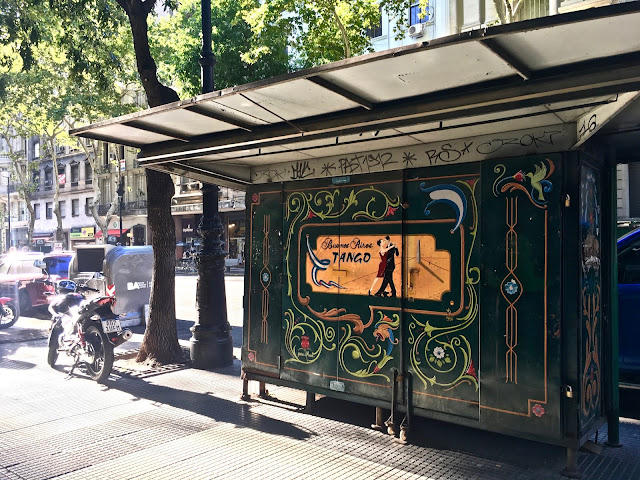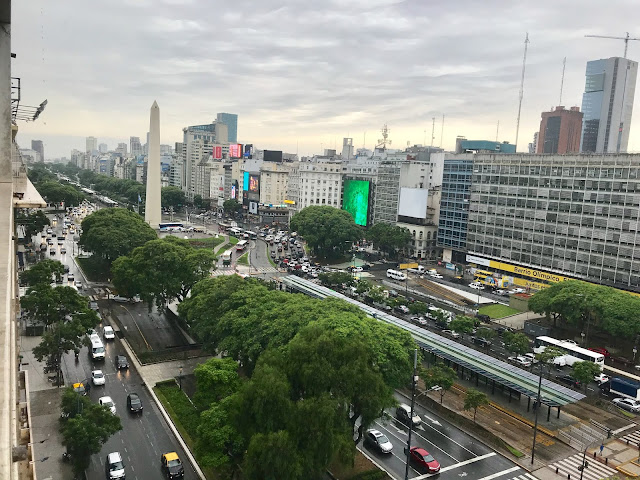This shot shows the Obilisco, the symbol of Buenos Aires. An appropriate symbol for a city with such a macho vibe.
 |
| A night shot of 9 de Julio. Both of these photos were taken from our balcony. |
There are several purposes. As a taxi driver told me, if they don't protest, their opinions will not be heard. They pick locations that will cause disruption of traffic and blocking 9 de Julio certainly does that.
Nearby there are several walking/shopping streets.
 |
| The center of Buenos Aires has several pedestrian walking/shopping street. Similar to those in Europe. |
 |
| Another walking street with a magazine kiosk. In the US people don't read newspapers and magazines as much as they do in many other countries. |
 |
| This is what a magazine kiosk looks like when it is shut up. |
The photos below requires a little explanation. Trash has been a problem in Buenos Aires for decades. Garbage is not picked up from buildings. Instead, people take their trash to containers in the street and trucks come by at night and empty them.
Cartoneros are people who roam the streets, going through the trash looking for recyclables, mostly cardboard. A conservative estimate is 15.000 people earn their living from picking through trash. As you can see in the photo below they are don't always bother to put the unrecyclable trash back in the bin.
 |
| A cartonero pulling his load |
There are 48 neighborhoods or barrios in Buenos Aires. Several have markets on weekends and these elderly tango dancers are street performers in San Telmo. One wonders how many decades they have been performing.
As we walked by they invited people from the audience to dance with him and I danced briefly. Unfortunately, Franklin didn't think to take a photo.
I am not sure which barrio this is. Belgrano maybe. This cobblestone street looks more like Europe than South America.
Sorry it is not a great photo. It is hard to shoot with an iphone at night. But hopefully, you can feel the romantic flavor of this short street lined with outdoor cafes.








